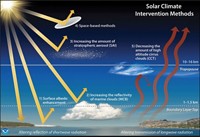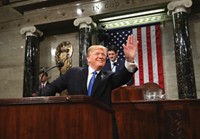Advertisement
Grab your lab coat. Let's get started
Welcome!
Welcome!
Create an account below to get 6 C&EN articles per month, receive newsletters and more - all free.
It seems this is your first time logging in online. Please enter the following information to continue.
As an ACS member you automatically get access to this site. All we need is few more details to create your reading experience.
Not you? Sign in with a different account.
Not you? Sign in with a different account.
ERROR 1
ERROR 1
ERROR 2
ERROR 2
ERROR 2
ERROR 2
ERROR 2
Password and Confirm password must match.
If you have an ACS member number, please enter it here so we can link this account to your membership. (optional)
ERROR 2
ACS values your privacy. By submitting your information, you are gaining access to C&EN and subscribing to our weekly newsletter. We use the information you provide to make your reading experience better, and we will never sell your data to third party members.
Nontraditional Careers
Movers And Shakers
Chemist-turned-intelligence expert Rod Schoonover on climate change and COVID-19
He resigned from the State Department after the White House withheld his science-based testimony from Congress
by Cheryl Hogue
May 31, 2020
| A version of this story appeared in
Volume 98, Issue 21

Rod Schoonover doesn’t fit easily into a particular academic niche. He spent a dozen years as a chemistry professor, yet his published papers are in physics journals. A career twist then landed him working in the US intelligence community, where he spent a decade focused on climate change, environment, health, and other scientific issues.
“I’d never planned on doing this,” he says. “The idea that someone like me would end up in the intelligence community did not seem likely.”
Last year, a political fight over climate change science led Schoonover to resign his government position. Now he teaches climate science part-time and consults on the security implications of global ecological disruption and climate change, including their contributions to the risks of pandemics from diseases such as COVID-19.
Vitals
▸ Current position: Founder and CEO, Ecological Futures Group, and adjunct professor, Georgetown University School of Foreign Service
▸ Professional highlights: Senior scientist/senior analyst, US Department of State; director of environment and natural resources, US National Security Council; professor of chemistry, California Polytechnic State University
▸ Education: BS, chemistry and physics, University of Kansas, 1986; PhD, physical chemistry, University of Michigan, 1993
▸ How he calmed his nerves at the congressional hearing last year: “I brought a picture of my 18-month-old daughter Aila and taped it right in front of me. Her bright smile not only brought me calm, but reminded me why the trajectory of the climate is so important—for my daughter’s generation, their children, and so on.”
▸ What he misses most about teaching physical chemistry: “The math. I cannot fully express how much I miss the partial derivatives of thermodynamics, the differential equations from kinetics, the wave and matrix forms of quantum mechanics, and the grand summations from statistical mechanics. I sometimes doodle these equations during boring meetings.”
“The very nature of the planet on which all of our institutions sit is changing underneath our feet,” he says, explaining why he thinks the national security system needs to change, too. The COVID-19 pandemic, Schoonover says, “could be a wake-up call.”
As an undergraduate at the University of Kansas, Schoonover opted to major in chemistry, his favorite subject in high school.
At the same time, “My interests don’t really map on to the traditional majors of college,” he says. “I took as many different science courses as I could,” along with art classes.
Support nonprofit science journalism
C&EN has made this story and all of its coverage of the coronavirus epidemic freely available during the outbreak to keep the public informed. To support us:
Donate Join Subscribe
A required course, quantum mechanics, inspired him to add a second major: physics. “People thought that was pretty insane,” he says. “I was afraid of losing out” by sticking with a single major, he explains. Schoonover conducted two years of undergrad research in an organic chemistry lab focused on photochemistry, an area of study that relies heavily on physics.
Schoonover went on to graduate school to study chemical physics at the University of Michigan. Complexity theory—which involves systems with components that interact in multiple ways—hadn’t been officially birthed at that time, but Schoonover identifies his PhD work as falling into this discipline. “It encompasses all the things that I love about science,” he says, with “aspects of physics and ecology and parts of biology and parts of chemistry.”
With a freshly minted doctorate, he landed his dream job as a faculty member of an institution focused on undergraduate education—California Polytechnic State University, San Luis Obispo. Although Schoonover enjoyed research, he says, “I didn’t want to spend a career chasing grants.” As a Cal Poly professor, he taught general chemistry, organic chemistry for nonmajors, and his favorite subject: physical chemistry.
“I loved teaching four quarters of that,” starting with traditional thermodynamics through dynamics and quantum mechanics to statistical mechanics. “It was brutal mathematically and elegant at the same time,” he says, “just gorgeous and terrifying.”
During these years as a professor—when, he volunteers, he sometimes sported hair dyed purple—Schoonover began reading extensively about human-caused climate change. He wondered why policy makers were failing to act to stem it, a question he pondered with his students and friends.
To find out more, Schoonover applied for and in 2009 was awarded a Science and Technology Policy Fellowship sponsored by the American Association for the Advancement of Science (AAAS). His goal was to spend a year in Washington, DC, to learn about climate change policy to bring insights back to his classroom.
He expected to work on international science cooperation or science diplomacy but ended up at the US Department of State’s Bureau of Intelligence and Research. It was a revelation to him that part of the US intelligence community worked on climate change and other environmental issues.
The placement turned out to be a good fit.
“When I joined the State Department, all of a sudden that propensity to be interested in a lot of different things served me very well,” Schoonover says. The swath of subjects he worked on included climate change, wildlife crime, fisheries protection, substances that deplete the stratospheric ozone layer, and other areas under the umbrella of science and technology policy. His background as a professor who explained complicated subjects was an asset as well, Schoonover says.
After his fellowship ended, Schoonover opted not to return to California. Instead, he signed on as a federal employee. “There’s quite a bit of appetite for the science-informed intelligence analysis that I was giving to senior policy makers all through the government,” he says.
“There’s an expectation that the intelligence community can offer its unimpeded analysis and independent analysis,” he says. The role of intelligence staff is not to argue for a particular policy but instead to provide information as objectively as possible, he says.
For years, Schoonover says, “I refused to acknowledge that science can ever be politicized. Science is science.”
Then, last year, he found himself in the middle of a political battle “just because I kept going back to what the science says.”
Schoonover was tapped to speak before the US House of Representatives’ Permanent Select Committee on Intelligence, which was probing the national security aspects of climate change. His written testimony was an analysis based on papers in peer-reviewed journals and the work of federal scientists. It concluded climate change will have broad implications for US national security.
The White House reviewed the written testimony and refused to allow it to be submitted to the congressional committee, a move that attracted a lot of attention from news outlets. A reviewer from the National Security Council added a critique to the testimony, saying the analysis “is not a science-based assessment but advocacy for the climate-alarm establishment.” The reviewer’s note argued that increased levels of carbon dioxide in the atmosphere would be beneficial.
“The idea that the policy side of the fence could dictate what the intelligence community says and how they say it is an anathema,” Schoonover says. He compares this to an outsider changing a scientist’s conclusions “because they didn’t like the tone.”
“It was ugly,” Schoonover says. “I have been pretty measured in my public discussions on this topic mostly because I don’t want to feed into the partisan bickering.”
Ultimately, Schoonover was allowed to appear before the congressional committee last June and answer lawmakers’ questions. But unlike the two other witnesses at the hearing, he did not submit written testimony for the hearing’s record.
Afterward, he found he could no longer be effective at his job, Schoonover says. He resigned, laying out his reasons in a New York Times op-ed column. “In blocking the submission of the written testimony, the White House trampled not only on the scientific integrity of the assessment but also on the analytic independence of an arm of the intelligence community,” he wrote.
Even though he has left government work, he recommends public service to other scientists, especially younger people who seek to help shape the world.
“Government work is noble,” Schoonover says, calling his former colleagues “some of the most talented, committed people I’ve ever known.”
Now, Schoonover advocates for what he calls a “recalibration” of the US national security framework.
The lack of US preparedness for the COVID-19 pandemic, despite a large national security budget, shows the current paradigm is out-of-date, he says. The existing framework arose after the Sept. 11, 2001, terrorist attacks on the US, with the government dramatically reconfiguring and expanding its national security apparatus. About 3,000 people died in those attacks.
Yet despite the slew of resources to beef up national security since then, more than 100,000 US residents have died this year after infection with the SARS-CoV-2 virus, which causes COVID-19.
The appearance of a deadly pathogen that would sweep across the world was inevitable, he says, adding that he was involved with a number of pandemic preparedness exercises while at the State Department.
Early detection of and steps to prevent the spread of zoonotic diseases—pathogens that originate in animals and spread to people—should get a higher priority within the national security infrastructure, Schoonover says. The stress that climate change places on ecological systems and the loss of the world’s biodiversity also deserve more attention, he says. “There should be entire teams of ecologists, veterinarians, and climate scientists who work on these problems.”
“Clearly we need to recalibrate national security towards protecting US citizens at home and abroad from the very serious threats arising from Earth systems under anthropogenic stress,” Schoonover says. “This not only means taking seriously the effects of climate change, biosphere instability, and emerging infectious diseases, but how these trends amplify and converge going into the 21st century.”




Join the conversation
Contact the reporter
Submit a Letter to the Editor for publication
Engage with us on Twitter